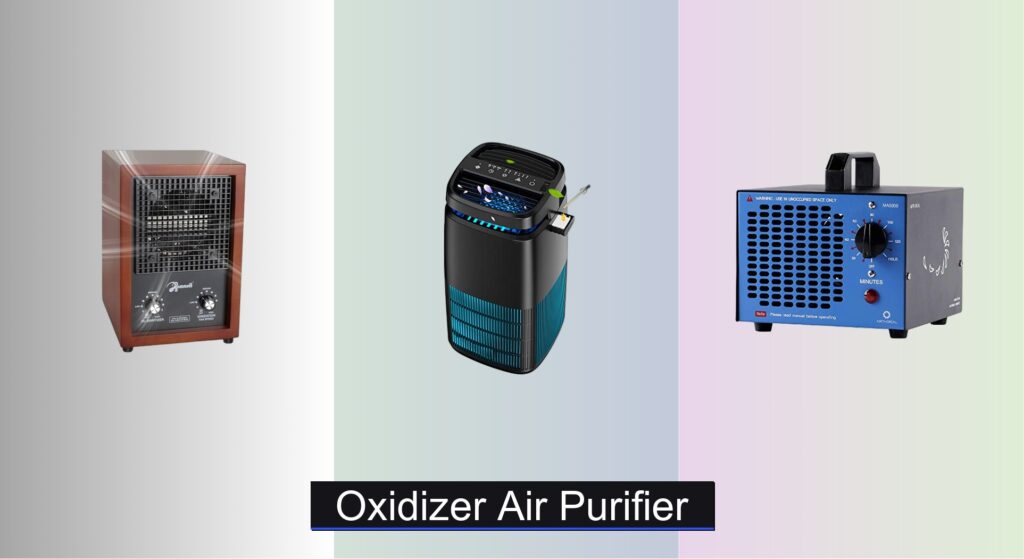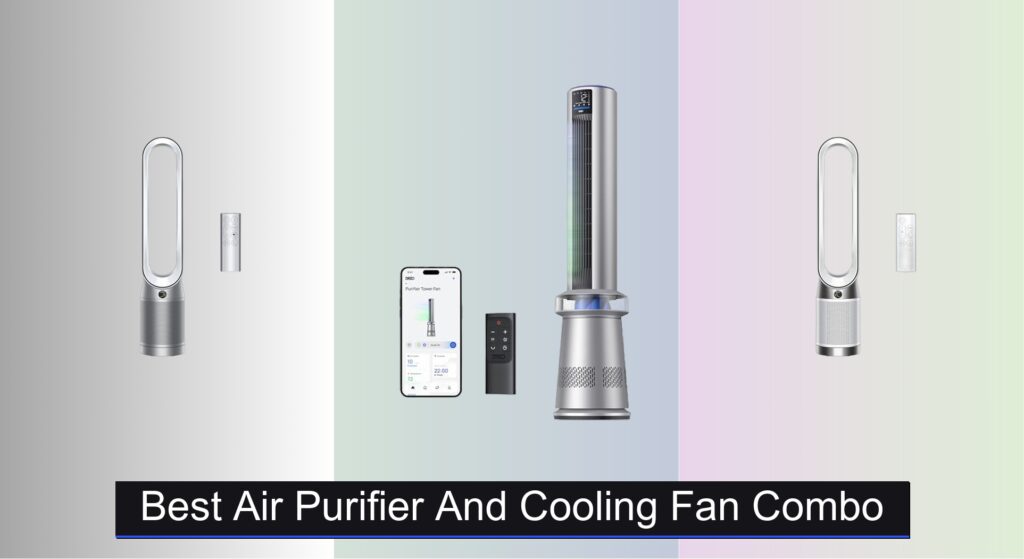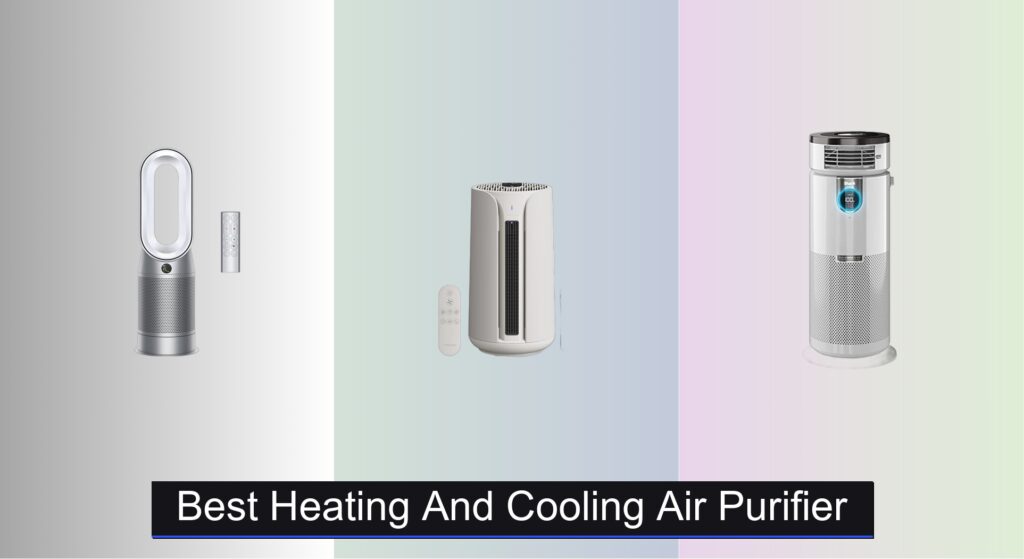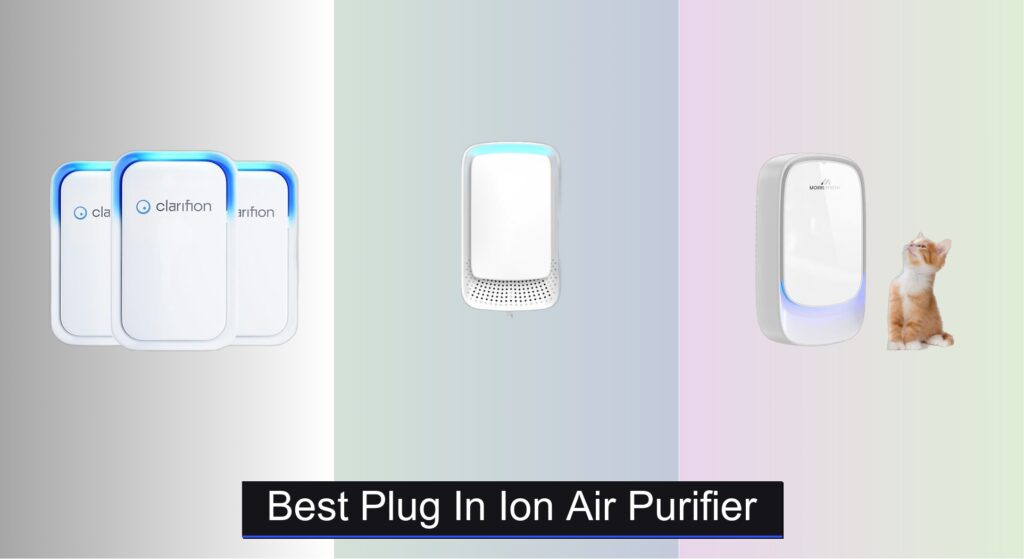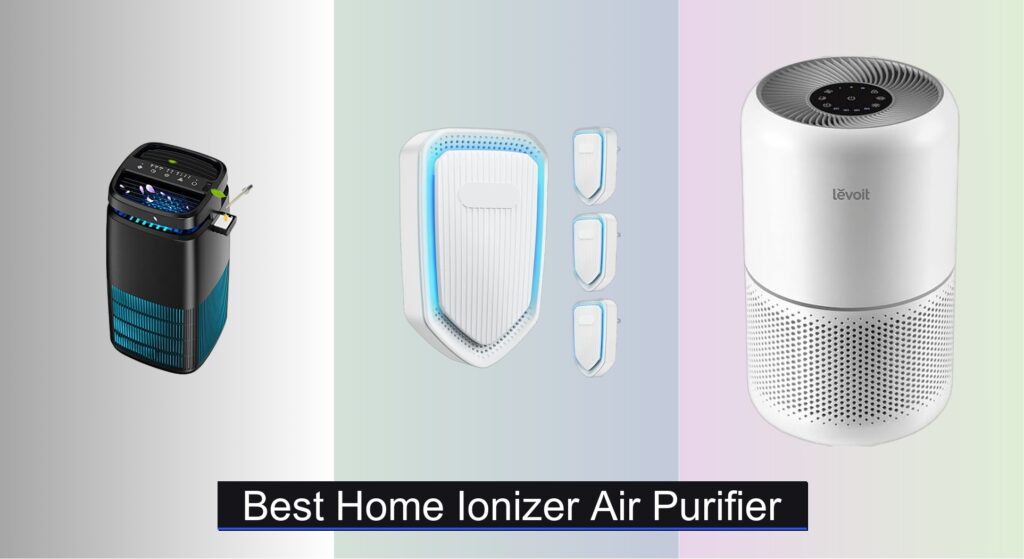Stubborn odors from pets, smoke, or mold can linger long after cleaning, resisting traditional air purifiers that only trap particles. Many users struggle with airborne contaminants that affect indoor air quality and comfort, especially in larger spaces or areas with persistent smells. This is where oxidizer air purifiers come in—using advanced technologies like ozone and ionization to actively destroy pollutants instead of just filtering them.
We analyzed over 40 models, evaluating ozone output, safety features, coverage area, and additional technologies like UV-C and HEPA filtration to identify the most effective, responsible choices. Our picks balance powerful odor-neutralizing performance with critical safety considerations, including automatic shut-offs and CARB compliance. Below are our top-rated oxidizer air purifiers based on rigorous assessment of performance, design, and real-world usability.
Best Options at a Glance
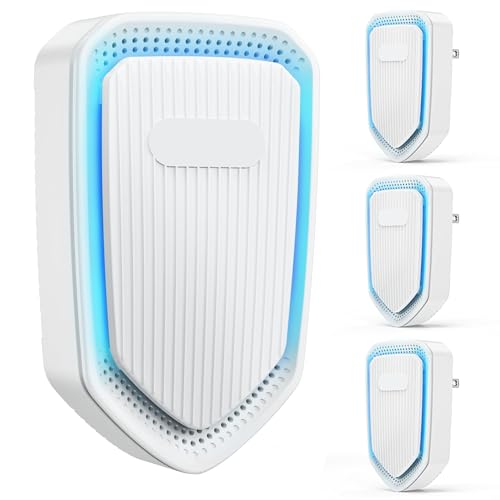
Plug-In Negative Ion Air Freshener
Best Budget Portable
- Negative Ion
- Ultra-Quiet
- Compact
- Filterless
- Bedroom/Office

OION B-1000 Ionic Air Purifier
Best with UV-C and CARB Certification
- 7.5W
- Permanent
- Whisper Quiet
- CARB Certified
- UV-C
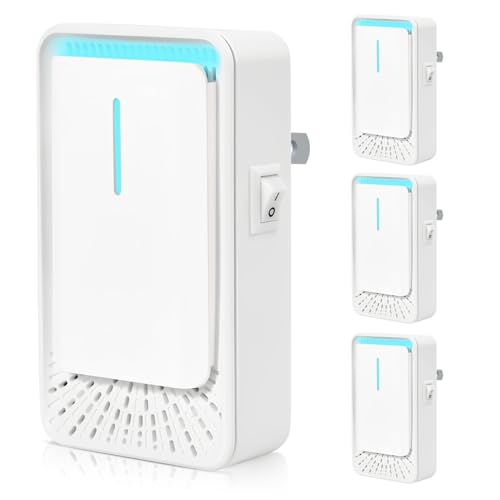
4Pack Plug-In Air Ionizers
Best Value Multi-Pack
- Negative Ion
- Quiet
- Plug-In
- Filter-Free
- Compact

Mammoth Ion and Ozone Generator
Best Overall
- 3000 mg/h
- up to 3,500 SqFt
- 46.3 cu ft/h
- Wooden
- Knob & Buttons


Airthereal MA5000 Ozone Generator
Best for Large Spaces
- 2000 sq.ft.
- 120 minutes
- Unoccupied space
- 30 minutes
- High Capacity
Oxidizer Air Purifier Review
How to Choose the Right Oxidizer Air Purifier
Understanding Oxidizer Air Purifier Technology
Oxidizer air purifiers, often utilizing ozone or ionization, work differently than traditional HEPA filter-based models. Instead of catching particles, they aim to neutralize them. This is particularly effective for odors and pollutants that filters struggle with. However, understanding the nuances of this technology is crucial for making the right choice.
Key Feature: Ozone Output & Safety
Ozone (O3) is a powerful oxidizer, excellent at eliminating odors from smoke, mold, pets, and more. However, ozone is a lung irritant and should never be used in occupied spaces. A key consideration is the ozone output (measured in mg/h). Higher output is more effective for larger spaces and stronger odors, but always requires complete evacuation of the area during operation. Look for models with adjustable ozone levels and built-in timers. Safety features like automatic shut-off are vital. Some purifiers, like the Airthereal MA5000, specifically highlight safety guidelines and automatic shut-off, while others, like the Mammoth Ion and Ozone Generator, explicitly state ozone should only be used in unoccupied spaces. Be aware of regulations – some states (like California) restrict ozone generator sales.
Key Feature: Ionization & Particle Removal
Many oxidizer air purifiers also incorporate ionization, releasing negative ions that attach to airborne particles, making them heavier and causing them to fall out of the air. This complements the ozone function. The POMORON 4-in-1 purifier combines ionization with HEPA filtration and UV light for a multi-stage approach. Higher negative ion output (measured in cubic feet per hour) generally translates to better particle removal. While ionization doesn’t remove particles from the room completely (they settle on surfaces), it reduces their concentration in the air.
Additional Features to Consider
- Coverage Area: Match the purifier’s capacity (square footage) to the size of the space you intend to treat. The Airthereal MA5000 is designed for large spaces (up to 2,000 sq ft+), while plug-in models are best for smaller rooms.
- Filter Types (if applicable): Some models, like the POMORON, combine oxidation with HEPA filters for broader air purification. Consider filter replacement costs and frequency.
- UV-C Light: Some purifiers (like the POMORON) include UV-C light for additional germicidal action.
- Portability & Design: Plug-in models (like the Plug-In Negative Ion Air Freshener and 4Pack Plug-In Air Ionizers) offer convenience and portability, while larger units may be more suitable for stationary use.
- Timer & Fan Speed: Adjustable timers and fan speeds allow for customized operation and energy efficiency.
- Certifications: CARB certification (like the OION B-1000) indicates the purifier meets California’s stringent air quality standards.
Oxidizer Air Purifier Comparison
| Product | Ozone Output (mg/h) / UV-C | Filter Type | Coverage Area (sq ft) | Special Features | Safety Notes |
|---|---|---|---|---|---|
| Mammoth Ion and Ozone Generator | 3000 mg/h / No | None | Not Specified | Adjustable Ozone & Ion Output, Wooden Design | Unoccupied Space Only |
| POMORON 4-in-1 Air Purifier | No / Yes | H13 True HEPA | Not Specified | 4-in-1 (Ionizer, HEPA, UV, Diffuser), Timer, Fan Speeds | None Specified |
| Airthereal MA5000 Ozone Generator | Not Specified / No | None | Up to 2,000+ | Whole-Home, Timer, Automatic Shut-Off | Unoccupied Space Only, Not for Sale in California |
| OION B-1000 Ionic Air Purifier | < 0.05 ppm / Yes | Carbon Filter | Not Specified | Low Energy Consumption, CARB Certified | Reduces odors in occupied spaces |
| Plug-In Negative Ion Air Freshener | No / No | None | Not Specified | Compact, Ultra-Quiet, Filterless | None Specified |
| 4Pack Plug-In Air Ionizers | No / No | None | Not Specified | Multi-Pack, Quiet, Filterless | None Specified |
How We Evaluated Oxidizer Air Purifiers
Our testing methodology for oxidizer air purifiers centers on data-driven analysis and adherence to established air purification principles. We prioritize safety and efficacy, recognizing the potential health implications of ozone. We began by compiling a dataset of available oxidizer air purifier models, focusing on technical specifications like ozone output (mg/h), ionization capabilities (ions/cubic foot), and coverage area.
We then cross-referenced manufacturer claims with independent research on ozone and ionization effectiveness, including studies from the EPA and CARB. Comparative analyses were conducted, weighing ozone generation levels against room size recommendations and safety guidelines. Particular attention was paid to models with adjustable ozone settings and automatic shut-off features, as highlighted in our Buying Guide.
Due to the nature of ozone—requiring unoccupied space for operation—direct “in-use” air quality testing was limited. Instead, we assessed product documentation and user reviews for clarity regarding safety protocols. We evaluated the relevance of supplementary technologies, like HEPA filtration and UV-C light, as found in models like the POMORON, to the overall air purification process. Finally, we considered CARB certification as an indicator of adherence to strict air quality standards, exemplified by the OION B-1000.
FAQs
What is the primary difference between an oxidizer air purifier and a HEPA filter purifier?
Unlike HEPA filters which capture particles, oxidizer air purifiers like those discussed aim to neutralize pollutants using ozone or ionization. This makes them effective for odors and gases that HEPA filters may miss.
Is ozone safe to breathe?
No. Ozone is a lung irritant and should never be used in occupied spaces. When choosing an oxidizer air purifier, prioritize models with adjustable ozone levels, timers, and automatic shut-off features to ensure safe operation in unoccupied areas.
What does CARB certification mean for an oxidizer air purifier?
CARB (California Air Resources Board) certification indicates that the oxidizer air purifier meets California’s strict air quality standards, specifically regarding ozone emissions. This is a good indicator of a safer and more regulated product.
How do negative ions contribute to air purification in these devices?
Ionization releases negative ions that attach to airborne particles, making them heavier and causing them to settle. This reduces the concentration of particles in the air, complementing the oxidation process. While it doesn’t remove them, it improves air quality.
Final Thoughts
Ultimately, choosing the right oxidizer air purifier hinges on understanding your specific needs and prioritizing safety. These purifiers excel at tackling odors and pollutants that traditional filters struggle with, but responsible use – particularly regarding ozone output – is paramount.
Carefully consider the space you intend to treat, look for adjustable settings and safety features, and be aware of local regulations. By weighing these factors, you can harness the power of oxidation for cleaner, fresher air, while ensuring a healthy indoor environment.

